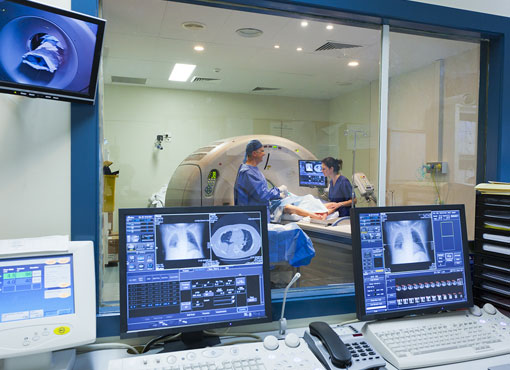
Cancer Control 2014
According to World Health Organization statistics, more than 60% of cancer deaths occur in the developing world, bringing suffering and tragedy to those afflicted. Cancer Control 2014, produced in association with the International Network for Cancer Treatment and Research, brings together articles, case-studies, opinion and experience on the scale of cancer prevalence in emerging health systems and how professionals are confronting the disease.
For featured articles click the boxes below, otherwise for an index of articles from the 2013 edition of Cancer Care 2014, please click here
Featured articles from Cancer Control 2014: (click title to go to full article)
OERC–India inaugurated at the Indian Cancer Congress In New Dehli
In November 2013, more than 5,000 Indian oncologists, oncology nurses, social workers and other cancer caregivers convened for a four-day congress in New Delhi, India, that was focused on the assessment and enhancement of cancer care in India and the education of health care professionals. This article outlines the findings of that meeting and the role that OERC–India can play in advancing oncology learning in India.
Cancer Screening And Prevention In China
Due to the increasing burden of cancer in China, the Chinese government launched a series of projects on cancer screening and prevention. Cervical and breast cancer screening are the most successful ones which cover a large number of rural women all over China. Screening has increased the detection of early cancer cases which could be treated more effectively. New technologies and highly efficient strategies are essential for expanding the current screening programmes to the whole population at risk.
Priorities for cancer prevention and control in Zimbabwe
Zimbabwe is among the top 22 countries in the world in terms of the burden of HIV.1 Many of the cancer cases in the country are related to HIV infection and therefore the country is facing a huge cancer challenge. Priority areas include prevention, early detection, care and support.
Integrating palliative care into a children’s oncology service in India
Provision of palliative care is being recognized increasingly as a human rights issue. Nevertheless, it is not available for many people with cancer and other serious diseases. This is particularly so for vulnerable groups, including children in resource-poor countries.
Palliative care as a human right
The right to palliative care is enshrined in many documents and agreements. This article explains how human rights relate to palliative care and where to find the relevant information, as well as the need to remove barriers and integrate palliative care into health care.
Retinoblastoma: An exemplary tumour in young children that can be cured in low-income countries
Cancer will be one of the major health challenges worldwide in the next few decades. Among all the different types of this ubiquitous disease, cancer in children must be among the priorities in action plans to combat cancer in low- and middle-income countries. Among childhood tumours, retinoblastoma appears to be a good example as it is now curable in over 95% of cases in high-income countries due to early diagnosis and quick access to a competent multidisciplinary team.
Improving Paediatric Cancer Care in Low- and Middle-Income Countries: The Experience of the St Jude International Outreach Program
This article describes the outreach programme devised by the St Jude Children’s Research Hospital in the United States to help children suffering from cancer in low- and middle-income countries. It considers the essential components required for successful twinning and introduces the nine “Critical Cs” which need to be considered before embarking on a twinning partnership.
Should Mammographic screening be introduced in Low- And Middle-Income Countries?
Robert Burton and Robin Bell , Department of Epidemiology and Preventive Medicine and Women’s Health Research Program, School of Public Health and Preventive Medicine, Monash University, Melbourne, Australia Breast cancer is the commonest cancer of women. In...
Strategies to improve KAPOSI sarcoma outcomes (SIKO): An educational intervention in Zimbabwe
Margaret Borok, University of Zimbabwe College of Health Sciences, James Hakim, University of Zimbabwe College of Health Sciences, Jean Kutner, University of Colorado Denver, Samantha MaWhinney, University of Colorado Denver, Eric A F Simões, University of Colorado...
Visual inspection of the cervix: Progress to date and the rationale for continued investment
Cervical cancer continues to be a public health problem in many developing countries despite the availability of effective preventive measures such as vaccination and screening. Visual inspection with acetic acid (VIA) is a low-cost test that has now been validated for primary cervical cancer screening. Despite the advances in vaccination and more sensitive molecular tests, there are compelling reasons for continuing and even accelerating the investment in programmes based on VIA and precancer treatment.
International cancer control congresses: Do they get us closer to the goals of population–based cancer control?
Readily available data documents the growing burden of cancer and non-communicable diseases (NCDs) for all nations.1 This burden is unequally distributed according to prevailing resources,2 human development,3 geography,1-3 and capacity and preparedness to respond, with the largest burden in areas with the least available resources and capacity.
ESMO’s Global Cancer Task Force: Promoting cancer and non-communicable disease control worldwide
Jose M Martin-Moreno Member, ESMO Public Policy Committee, Eduardo Cazap Deputy Chair, ESMO Emerging Countries Committee and David Kerr Past ESMO President and Member, ESMO Emerging Countries Committee The primary goal of the ESMO Global Cancer Task Force is to make...







